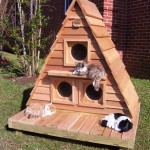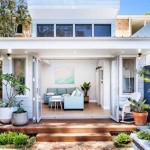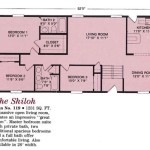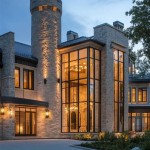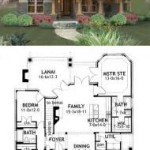Contemporary house plans are blueprints for modern, stylish homes that incorporate the latest trends in architecture and design. They emphasize clean lines, open spaces, and a seamless flow between indoor and outdoor living areas. An example of a contemporary house plan is one that features a minimalist exterior with large windows, a flat roof, and a spacious open-plan interior.
Contemporary house plans prioritize functionality and comfort, featuring well-designed kitchens, bathrooms, and living areas that cater to the needs of modern families. They often incorporate sustainable design elements, such as energy-efficient appliances, natural lighting, and recycled materials, to create homes that are both stylish and environmentally conscious.
In this article, we will delve into the key aspects of contemporary house plans, exploring their design principles, popular features, and the benefits they offer to homeowners. We will also provide practical advice on choosing and implementing a contemporary house plan to create a dream home that meets your style, needs, and budget.
Contemporary house plans are characterized by several key features:
- Clean lines
- Open spaces
- Minimalist design
- Large windows
- Natural lighting
- Sustainable elements
- Energy efficiency
- Indoor-outdoor flow
These features combine to create homes that are both stylish and functional, offering a comfortable and modern living environment.
Clean lines
Clean lines are a defining characteristic of contemporary house plans. This refers to the use of simple, geometric shapes and the absence of unnecessary ornamentation or clutter. Clean lines create a sense of order and serenity, and they help to emphasize the home’s overall form and structure.
In contemporary house plans, clean lines can be seen in the home’s exterior, interior, and even in the landscaping. For example, the exterior of a contemporary home might feature a simple rectangular shape with large windows and a flat roof. The interior might have an open-plan layout with minimal walls and partitions, creating a spacious and airy feel. Even the landscaping might be designed with clean lines, such as geometric flower beds and manicured lawns.
The use of clean lines in contemporary house plans has several benefits. First, it creates a sense of visual appeal. Clean lines are pleasing to the eye and they can help to create a sense of harmony and balance. Second, clean lines can make a home feel more spacious and open. By eliminating unnecessary clutter and ornamentation, clean lines can help to create a sense of flow and movement throughout the home.
Finally, clean lines can help to reduce the cost of building and maintaining a home. Homes with clean lines are often simpler to construct, and they require less maintenance than homes with more complex designs. This can save homeowners money in the long run.
Open spaces
Open spaces are another defining characteristic of contemporary house plans. This refers to the use of large, open areas that are free of walls and partitions. Open spaces create a sense of spaciousness and freedom, and they allow for a more fluid and flexible use of space.
In contemporary house plans, open spaces can be seen in the home’s interior and exterior. For example, the interior of a contemporary home might have an open-plan layout with a combined living room, dining room, and kitchen. The exterior might feature a large deck or patio that is connected to the home’s interior by large sliding glass doors.
The use of open spaces in contemporary house plans has several benefits. First, it creates a sense of visual appeal. Open spaces are pleasing to the eye and they can help to create a sense of harmony and balance. Second, open spaces can make a home feel more spacious and open. By eliminating unnecessary walls and partitions, open spaces can help to create a sense of flow and movement throughout the home.
Finally, open spaces can help to improve the home’s functionality. Open spaces can be used for a variety of purposes, such as entertaining, relaxing, or working. This flexibility makes open spaces ideal for families with diverse needs.
- Improved flow and circulation: Open spaces allow for a more fluid and efficient flow of traffic throughout the home. This is especially beneficial for families with children or pets, as it allows for more freedom of movement and play.
- Increased natural light: Open spaces allow for more natural light to enter the home, which can help to create a brighter and more inviting atmosphere. This can also help to reduce the need for artificial lighting, which can save energy and money.
- Enhanced views: Open spaces often offer better views of the surrounding landscape. This can help to create a more relaxing and enjoyable living environment, and it can also increase the home’s value.
- Improved air quality: Open spaces allow for better air circulation, which can help to improve the home’s air quality. This is especially beneficial for people with allergies or respiratory problems.
Minimalist design
Minimalist design is a key element of contemporary house plans. It refers to the use of simple, clean lines and a neutral color palette to create a sense of space and serenity. Minimalist design is often characterized by the use of natural materials, such as wood, stone, and glass, and by the absence of unnecessary ornamentation or clutter.
In contemporary house plans, minimalist design can be seen in both the home’s interior and exterior. For example, the exterior of a minimalist home might feature a simple rectangular shape with a flat roof and large windows. The interior might have an open-plan layout with white walls, concrete floors, and built-in furniture. The use of natural materials and neutral colors helps to create a sense of calm and tranquility.
There are several benefits to using minimalist design in contemporary house plans. First, it can help to create a sense of visual appeal. Minimalist design is pleasing to the eye and it can help to create a sense of harmony and balance. Second, minimalist design can make a home feel more spacious and open. By eliminating unnecessary clutter and ornamentation, minimalist design can help to create a sense of flow and movement throughout the home.
Finally, minimalist design can help to reduce the cost of building and maintaining a home. Homes with minimalist design are often simpler to construct, and they require less maintenance than homes with more complex designs. This can save homeowners money in the long run.
Benefits of minimalist design in contemporary house plans
- Creates a sense of space: Minimalist design can help to make a home feel more spacious and open. This is because minimalist design eliminates unnecessary clutter and ornamentation, which can create a sense of visual chaos and make a home feel smaller.
- Promotes relaxation: Minimalist design can help to promote relaxation and tranquility. This is because minimalist design creates a sense of calm and order, which can help to reduce stress and anxiety.
- Reduces maintenance costs: Minimalist design can help to reduce the cost of maintaining a home. This is because minimalist homes are simpler to clean and maintain than homes with more complex designs.
- Increases energy efficiency: Minimalist design can help to increase the energy efficiency of a home. This is because minimalist homes often have fewer windows and doors, which can help to reduce heat loss and gain.
If you are considering building a contemporary house, minimalist design is a great option to consider. Minimalist design can help you to create a home that is stylish, functional, and affordable.
Large windows
Large windows are a defining feature of contemporary house plans. They allow for natural light to flood the home, creating a bright and airy atmosphere. Large windows also offer stunning views of the surrounding landscape, bringing the outdoors in.
There are several benefits to using large windows in contemporary house plans. First, they can help to reduce the need for artificial lighting, which can save energy and money. Second, large windows can help to improve the home’s ventilation, which can create a healthier and more comfortable living environment. Third, large windows can help to increase the home’s value.
There are a few things to consider when using large windows in contemporary house plans. First, it is important to choose the right type of windows. There are a variety of window types available, each with its own advantages and disadvantages. It is important to choose windows that are appropriate for the climate and the home’s design.
Second, it is important to consider the placement of the windows. The placement of the windows can affect the amount of natural light that enters the home, as well as the views from the home. It is important to place the windows in a way that maximizes natural light and views.
Benefits of using large windows in contemporary house plans
- Increased natural light: Large windows allow for more natural light to enter the home, which can help to create a brighter and more airy atmosphere. This can also help to reduce the need for artificial lighting, which can save energy and money.
- Improved ventilation: Large windows can help to improve the home’s ventilation, which can create a healthier and more comfortable living environment. This is because large windows allow for more fresh air to circulate throughout the home.
- Increased views: Large windows offer stunning views of the surrounding landscape, bringing the outdoors in. This can help to create a more relaxing and enjoyable living environment, and it can also increase the home’s value.
- Reduced energy costs: Large windows can help to reduce energy costs by reducing the need for artificial lighting. This is because large windows allow for more natural light to enter the home, which can reduce the need for electric lights.
If you are considering building a contemporary house, large windows are a great option to consider. Large windows can help you to create a home that is stylish, functional, and energy-efficient.
Natural lighting
Natural lighting is a key element of contemporary house plans. Large windows and skylights are used to flood the home with natural light, creating a bright and airy atmosphere. Natural lighting has several benefits, including:
- Reduced energy costs: Natural lighting can help to reduce energy costs by reducing the need for artificial lighting. This is because natural light can be used to illuminate the home during the day, reducing the need for electric lights.
In addition, natural light can help to reduce the need for heating and cooling. This is because natural light can help to warm the home in the winter and cool the home in the summer, reducing the need for artificial heating and cooling systems.
- Improved health: Natural lighting has been shown to have several health benefits, including improved mood, increased productivity, and reduced stress. This is because natural light helps to regulate the body’s circadian rhythm, which is the natural sleep-wake cycle.
In addition, natural light has been shown to improve cognitive function and reduce the risk of depression. This is because natural light helps to produce serotonin, a neurotransmitter that is associated with happiness and well-being.
- Enhanced aesthetics: Natural lighting can help to enhance the aesthetics of a home. This is because natural light can help to create a more inviting and comfortable atmosphere. In addition, natural light can help to highlight the home’s architectural features and interior design.
- Increased home value: Homes with natural lighting are often more valuable than homes without natural lighting. This is because natural lighting is a desirable feature that many homebuyers are looking for.
In addition, homes with natural lighting are often more energy-efficient, which can save homeowners money on their energy bills. This can make homes with natural lighting more attractive to potential buyers.
If you are considering building a contemporary house, natural lighting is a key element to consider. Natural lighting can help you to create a home that is stylish, functional, and energy-efficient.
Sustainable elements
Many contemporary house plans incorporate sustainable elements to reduce their environmental impact and create a healthier living environment.
- Energy efficiency: Contemporary house plans often incorporate energy-efficient features, such as high-performance windows and doors, insulation, and Energy Star appliances. These features help to reduce the home’s energy consumption, which can save homeowners money on their energy bills and reduce the home’s carbon footprint.
- Water conservation: Contemporary house plans often incorporate water-saving features, such as low-flow toilets, faucets, and showerheads. These features help to reduce the home’s water consumption, which can save homeowners money on their water bills and reduce the strain on local water resources.
- Renewable energy: Many contemporary house plans incorporate renewable energy sources, such as solar panels and geothermal heating and cooling systems. These features help to reduce the home’s reliance on fossil fuels and create a more sustainable living environment.
- Sustainable materials: Contemporary house plans often incorporate sustainable materials, such as recycled materials, bamboo, and cork. These materials help to reduce the home’s environmental impact and create a healthier living environment.
By incorporating sustainable elements, contemporary house plans can help to reduce the home’s environmental impact and create a healthier living environment. Sustainable elements can also help homeowners to save money on their energy and water bills.
Energy efficiency
Energy efficiency is a key consideration in contemporary house plans. By incorporating energy-efficient features, homeowners can reduce their energy consumption, which can save them money on their energy bills and reduce their home’s carbon footprint.
Energy-efficient features in contemporary house plans
There are a number of energy-efficient features that can be incorporated into contemporary house plans, including:
- High-performance windows and doors: High-performance windows and doors are designed to minimize heat loss and gain. They typically have multiple panes of glass, with a low-emissivity coating on the inner pane. This coating helps to reflect heat back into the home in the winter and out of the home in the summer.
- Insulation: Insulation is another important energy-efficient feature. It helps to keep the home warm in the winter and cool in the summer by reducing the transfer of heat through the walls, roof, and floor. Insulation is typically made from materials such as fiberglass, cellulose, or spray foam.
- Energy Star appliances: Energy Star appliances are appliances that have been certified by the Environmental Protection Agency (EPA) to meet certain energy-efficiency standards. Energy Star appliances can save homeowners money on their energy bills and help to reduce their carbon footprint.
- Renewable energy sources: Renewable energy sources, such as solar panels and geothermal heating and cooling systems, can help to reduce the home’s reliance on fossil fuels. Solar panels generate electricity from the sun, while geothermal heating and cooling systems use the earth’s natural heat to warm and cool the home.
Benefits of energy efficiency in contemporary house plans
There are a number of benefits to incorporating energy-efficient features into contemporary house plans, including:
- Reduced energy costs: Energy-efficient features can help homeowners to reduce their energy consumption, which can save them money on their energy bills.
- Reduced carbon footprint: Energy-efficient features can help to reduce the home’s carbon footprint by reducing its reliance on fossil fuels.
- Increased comfort: Energy-efficient features can help to make the home more comfortable by keeping it warm in the winter and cool in the summer.
- Improved indoor air quality: Energy-efficient features, such as high-performance windows and doors, can help to improve indoor air quality by reducing the infiltration of outdoor pollutants.
If you are considering building a contemporary house, energy efficiency is a key consideration. By incorporating energy-efficient features, you can create a home that is comfortable, affordable, and environmentally friendly.
Indoor-outdoor flow
Indoor-outdoor flow is a key feature of contemporary house plans. It refers to the seamless transition between the home’s interior and exterior spaces. This can be achieved through the use of large windows and doors, as well as outdoor living areas, such as decks and patios.
- Increased natural light: Large windows and doors allow for more natural light to enter the home, which can help to create a brighter and more airy atmosphere. This can also help to reduce the need for artificial lighting, which can save energy and money.
- Improved ventilation: Large windows and doors can help to improve the home’s ventilation, which can create a healthier and more comfortable living environment. This is because large windows and doors allow for more fresh air to circulate throughout the home.
- Enhanced views: Large windows and doors offer stunning views of the surrounding landscape, bringing the outdoors in. This can help to create a more relaxing and enjoyable living environment, and it can also increase the home’s value.
- Increased usable space: Outdoor living areas, such as decks and patios, can help to increase the home’s usable space. This is because outdoor living areas can be used for a variety of purposes, such as entertaining, relaxing, or dining.
Indoor-outdoor flow can help to create a more comfortable, healthy, and enjoyable living environment. It can also help to increase the home’s value. If you are considering building a contemporary house, indoor-outdoor flow is a key feature to consider.










Related Posts


